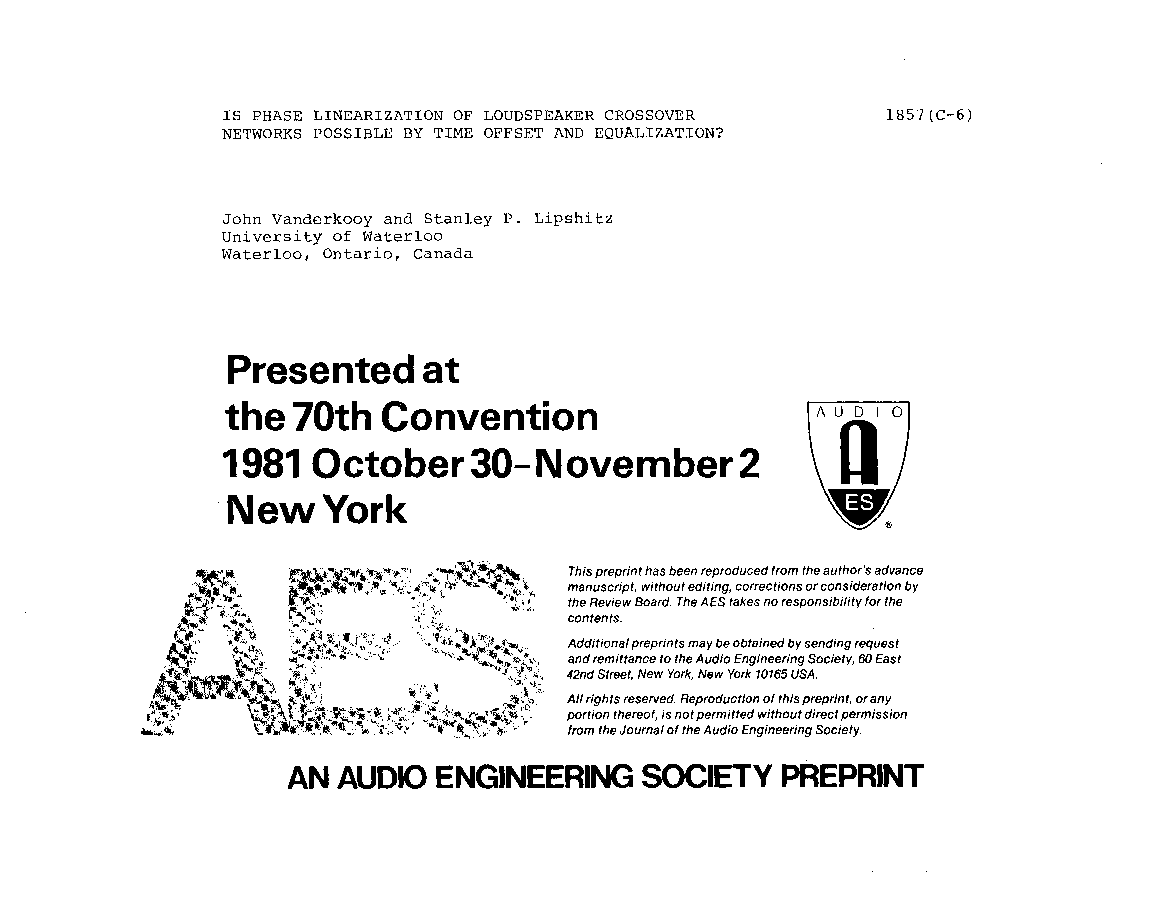Home / Publications / E-library page
You are currently logged in as an
Institutional Subscriber.
If you would like to logout,
please click on the button below.
Home / Publications / E-library page
Only AES members and Institutional Journal Subscribers can download
Conventional loudspeaker crossover networks of slope greater than 6 dB/octave, when properly implemented, result in a loudspeaker system whose acoustic transfer function, although of flat magnitude, has all-pass phase characteristics. The system is thus non-minimum phase, and complicated phase equalization using delay equalizers is required in order to render it linear-phase and so transient-perfect. A number of attempts are currently being made to acoustically align such systems by deliberately either introducing or eliminating time delays between the drivers and using conventional minimum-phase equalization to flatten their overall frequency resonse. It is shown in this paper that no choice of inter-unit time delay can render the system minimum-phase, and hense that minimum-phase equalization cannot make such a system both flat and phase linear.
Author (s): Vanderkooy, John; Lipshitz, Stanley P.
Affiliation:
University of Waterloo, Waterloo, Ontario, Canada
(See document for exact affiliation information.)
AES Convention: 70
Paper Number:1857
Publication Date:
1981-10-06
Import into BibTeX
Session subject:
Transducers
Permalink: https://aes2.org/publications/elibrary-page/?id=11899
(864KB)
Click to purchase paper as a non-member or login as an AES member. If your company or school subscribes to the E-Library then switch to the institutional version. If you are not an AES member Join the AES. If you need to check your member status, login to the Member Portal.

Vanderkooy, John; Lipshitz, Stanley P.; 1981; Is Phase Linearization of Loudspeaker Crossover Networks Possible by Time Offset and Equalization? [PDF]; University of Waterloo, Waterloo, Ontario, Canada; Paper 1857; Available from: https://aes2.org/publications/elibrary-page/?id=11899
Vanderkooy, John; Lipshitz, Stanley P.; Is Phase Linearization of Loudspeaker Crossover Networks Possible by Time Offset and Equalization? [PDF]; University of Waterloo, Waterloo, Ontario, Canada; Paper 1857; 1981 Available: https://aes2.org/publications/elibrary-page/?id=11899